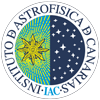| |
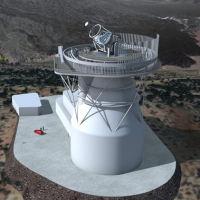 The European Solar Telescope The European Solar Telescope
The European Solar Telescope (EST) will be a 4-meter class solar telescope, to be located in the Canary Islands. It will be optimised for studies of the magnetic coupling between the deep photosphere and upper chromosphere, by using multiple wavelength imaging, spectroscopy and spectropolarimetry. The IAC is leading this international project with the strategic support of the Severo Ochoa program, by recruiting 4 engineers to foster the preliminary design phase of the project. More details about the project can be found at: www.otri.iac.es/est and www.solarnet-east.eu
|
|
| |
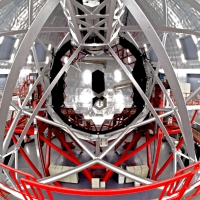 GTC Instrumentation GTC Instrumentation
A defining aspect of the scientific success of any telescope installation is its ability to deliver cutting-edge data through novel instrumentation. The Severo Ochoa project, aligned with this purpose, is supporting the development of key instrumentation for GTC at the IAC: HORUS, (High Optical Resolution Ultra-stable Spectrograph), a high-resolution cross-dispersed echelle spectrograph; EMIR, a wide-field camera and a near-infrared multi-object medium-resolution spectrograph (see also the IAC/EMIR web page for further details); FRIDA (inFRared Imager and Dissector for Adaptive optics), a near infrared integral field spectrograph with imaging capability to be used with the forthcoming adaptive optics system of the GTC.
|
|
|
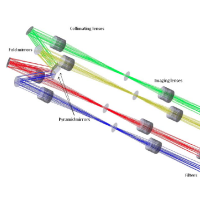 AOLI: Adaptive Optics Lucky Imager AOLI: Adaptive Optics Lucky Imager
The highest resolution images of faint targets ever taken in the visible or near infrared were obtained by combining Lucky Imaging with low order adaptive optics. AOLI is likely to be the first of the new class of high sensitivity, near diffraction limited imaging systems giving higher resolution in the visible from the ground than hitherto been possible from space. It will be used initially on the WHT 4.2 m with the potential to move to the GTC 10 meter telescope on La Palma.
|
|
| |
 Space mission: EUCLID Space mission: EUCLID
The Euclid mission aims at understanding why the expansion of the Universe is accelerating and what is the nature of the source responsible for this acceleration which physicists refer to as dark energy. The Severo Ochoa project supports this ESA medium class astronomy and astrophysics space mission by recruiting one electronic engineer to guarantee the IAC commitment with the PDR, in particular within the NISP instrument framework. See more details about the participation of IAC in Euclid at the IAC/NISP web page.
|
|
| |
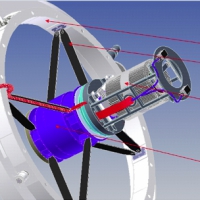 Weave: wide-field multi-object spectrograph for the WHT Weave: wide-field multi-object spectrograph for the WHT
WEAVE is a powerful new multi-object spectrograph being planned for the 4.2-m William Herschel Telescope. It will allow astronomers to take spectra of up to 1000 stars and galaxies in a single exposure. This huge leap in observing efficiency (currently only 150 objects can be observed simultaneously) will allow astronomers to tackle several astrophysical problems that until now have remained out of reach. The Severo Ochoa support is focussed in the recruitment of a software engineer dealing with data analysis.
|
|
| |
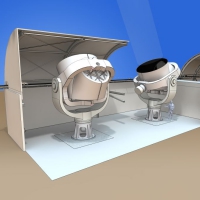 The Quijote CMB experiment The Quijote CMB experiment
The QUIJOTE (Q-U-I JOint TEnerife) CMB Experiment is a scientific collaboration for the construction of two telescopes and three instruments dedicated to characterize the polarization of the CMB and other galactic and extragalactic emission in the frequency range 10-40 GHz, and at large angular scales. The Severo Ochoa project contributes to the purchase of waveguides for the second instrument, TGI (Thirty GHz Instrument). The waveguides are the rectangular tubes along which the microwaves bounce and reflect into the receiver and the rest of the instrument. See details about the project at the IAC/QUIJOTE web page.
|
|
| |
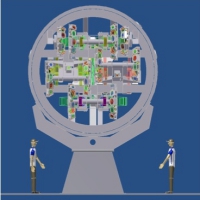 Harmoni Harmoni
HARMONI is a visible and near-infrared integral field spectrograph, providing the E-ELT's core spectroscopic capability. The instrument provides simultaneous spectra of ~32000 (8000) spaxels in the near-IR (visible) arranged in a 2:1 aspect ratio contiguous field. HARMONI is conceived as a first light instrument, addressing many of the key E-ELT science cases. The Severo Ochoa's support is focused in the recruitment of an electronical engineer for the instrument design. See also the IAC/HARMONI web page for further details on the project.
|
|
| |
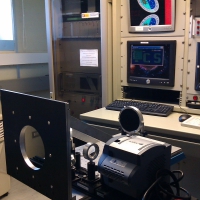 Wide FastCam Wide FastCam
It consists of a wide-field lucky imaging camera to obtain extremely high temporal and spatial resolution images in the optical wavelength range from ground-based telescopes. The Severo Ochoa contribution is focussed in the design and fabrication of a stable and improved version of the current instrument. Wide FastCam should be enter in operation by the middle of 2014. See also the IAC/FastCam web page for further details on the FastCam and the Wide Fast Cam projects.
|
|
| |
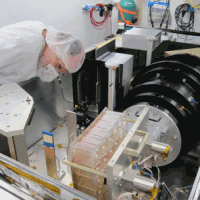 Apogee 2 Apogee 2
APOGEE is a high-resolution near-IR spectrographic survey of ~100,000 stars in the Milky Way. Spectra are observed with a custom-built multi-object spectrograph. The APO Galaxy Evolution Experiment 2 (APOGEE-2) will explore the formation history of the Milky Way studying the patterns seen today in the motions of stars and the abundances of chemical elements that they contain. The IAC is involved in the construction of the new spectrograph for the de 2.5m Du Pont Telescope at Las Campanas Obs. The Severo Ochoa support is focussed in the polishing of the folding mirrors #1 and #2 of the spectrograph for APOGEE -2 South.
|
|
| |
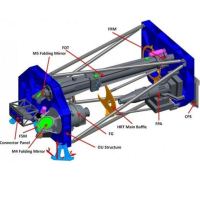 Solar Orbiter Solar Orbiter
Solar Orbiter mission will be used to examine how the Sun creates and controls the heliosphere. The spacecraft will combine in situ and remote sensing observations. SOPHI (Solar Orbiter Polarimetric and Helioseismic Imager) was selected as one of the remote sensing instruments aboard the spacecraft. Its main task will be the measurement of the photospheric vector magnetic fields and velocity flows. The Spanish consortium is responsible of one of the two telescopes of the instrument, the Full Disk Telescope (FDT), as well as the complete Electronics Unit. The Severo Ochoa support is focused in the purchase of the two mirrors for the coelostat being part of the optical ground support equipment.
|
|
|
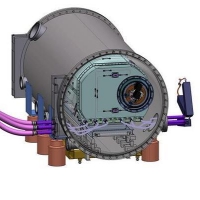 Carmenes Carmenes
CARMENES is a next-generation instrument being built for the 3.5m telescope at the Calar Alto Observatory. It consists of two separated spectrographs each of which shall perform high-accuracy radial-velocity measurements (∼1 m s-1) with long-term stability. The fundamental science objective of CARMENES is to carry out a survey of ∼300 late-type main-sequence stars with the goal of detecting low-mass planets in their habitable zones. The Severo Ochoa is supporting the manufacture of the optomechanical mounts.
|
|
|
 ESPRESSO ESPRESSO
The Echelle SPectrograph for Rocky Exoplanet and Stable Spectroscopic Observations, is a fiber-fed, cross-dispersed, high resolution, Echelle spectrograph which can be operated with one or up to 4 Unit Telescopes (UTs) of ESO’s VLT. ESPRESSO will combine unprecedented radial velocity precision with the large collecting area of the UTs. The IAC is involved in several working packages of the instrument development. Further details can be found in the IAC/ESPRESSO web page. The Severo Ochoa is supporting part of the manufacture of the optomechanical mounts and the fiber-link system.
|
|














